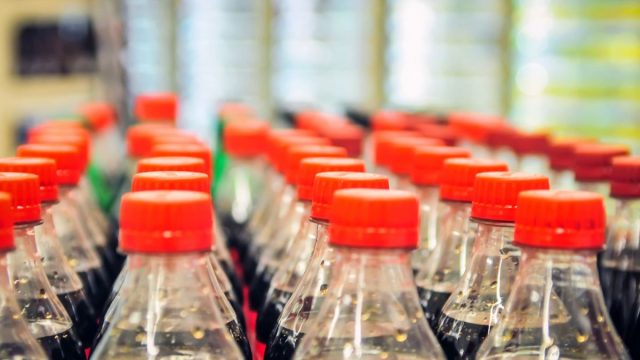A new report has detected the presence of microplastics and nanoplastics in soft drink bottles, the number of which increases depending on the number of times the bottle is opened.
A French NGO has identified six types of plastic in Coca-Cola and Schweppes soft drinksaccording to a report published this week.
The organization Agir pour l’environnment (Act for the environment) used two laboratories to carry out studies on the possible presence of plastic nanoparticles and microparticles when bottles are opened one, ten or twenty times to imitate its actual use. The report included analyzes of the plastics with six different polymers identified.
The association rated the surprising results taking into account that “manufacturers declare only two polymers in contact with the drink: [polietileno] PE for the cap and PET for the bottle,” says the statement published by the organization.
These results call “into question Coca-Cola and the French health authorities, who must guarantee consumers (a packaging) that does not expose them to molecules whose health impact cannot be ruled out,” declared Magali Leroy, head of surveys. and Agir analysis about microplastics.
Large amount of nanoparticles
After opening the bottles for the first time, four microparticles were found per 1 liter of Coca-Cola and 4.6 microparticles per 1 liter of Schweppes. After opening the bottles 20 times, 46 microparticles were identified per one liter of Coca-Cola and 62 microparticles per one liter of Schweppes. That is to say between 5 and 13 times more particles found when opening for the first time.
According to the author, it is possible that the plastic cap degrades and generate more particles as the bottle is opened. Furthermore, it is interesting to note that the color of the cap also influences.
All microparticles identified were smaller than 500 micrometers (µm) and a large majority were smaller than 100 µm. Most particles related to the openings were smaller than 50 µm.
A “large amount” of nanoparticles was also found in both soft drinks. Its shape with irregular contours “favors its interaction with other particles, combining the effects of several polymers,” according to the report, which adds that it also facilitates its contact with human cells.
The NGO contacted several French authorities urging them to implement guidelines.
Between 39,000 and 52,000 microplastics ingested each year
The NGO drew attention two years ago by publishing its study on the presence of plastic microparticles in nine brands of bottled water sold in France.
Previous research has estimated that the annual intake of microplastic particles from food sources ranges between 39,000 and 52,000 per person per year.
This figure rises to between 74,000 and 121,000 particles consumed per person per year if those inhaled are counted.
A study published in January of this year found hundreds of thousands of tiny pieces of plastic in plastic water bottlesa much higher figure than previously reported.
Although the possible consequences of exposure to microplastics for human health are still being studied, there is growing concern about their impact.







